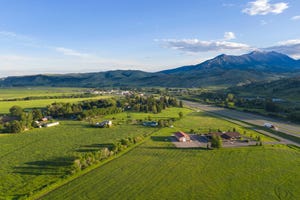Comcast unveils first DOCSIS 4.0 gateway, tests 'high fidelity video'
Comcast plans to launch the XB10, a DOCSIS 4.0 gateway with Wi-Fi 7, in the second half of 2024. The company is also prepping the launch of 'Wi-Fi Speed Boost' and a low-lag 4K/HDR video enhancement it calls 'high fidelity video.'
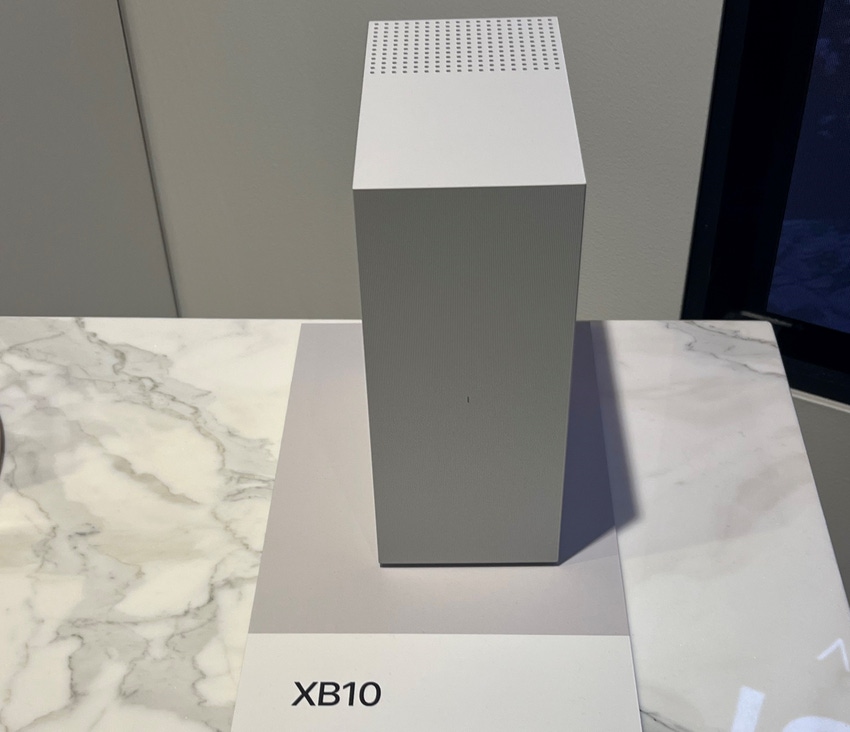
PHILADELPHIA – Comcast execs held court here at the company's "Converge" event with press and analysts to unveil the operator's first DOCSIS 4.0 gateway and tease the coming launch of "Wi-Fi Speed Boost" and emerging "high fidelity video" capabilities. Those were among the highlights of a broader look into the company's technology and services roadmap.
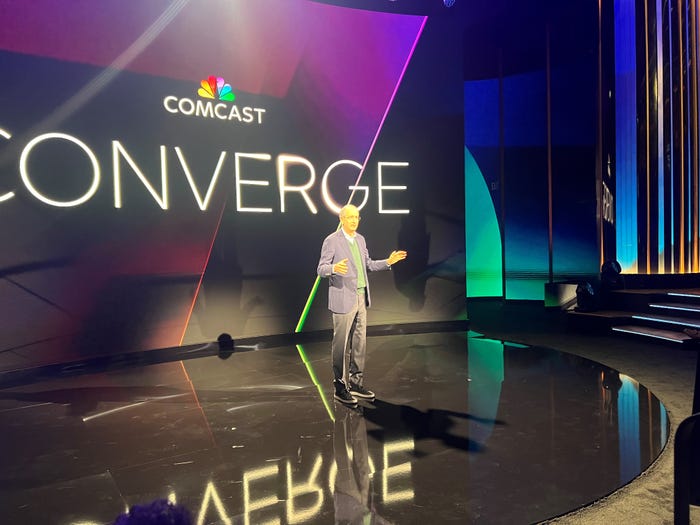
Comcast Chairman and CEO Brian Roberts speaks at the 'Converge' event, held at the Comcast Technology Center's Ralph J. Roberts Forum. (Source: Jeff Baumgartner/Light Reading)
Starting with broadband, Comcast's new DOCSIS 4.0 gateway, dubbed the XB10, comes equipped with Wi-Fi 7 and a new "unified" DOCSIS chipset from Broadcom that can support both flavors of D4.0: Full Duplex DOCSIS (FDX, Comcast's primary approach) and Extended Spectrum DOCSIS (ESD). Introduced last fall, that chipset is part of a broader family of AI-assisted silicon that will also be housed in Comcast nodes and amplifiers for its ongoing DOCSIS 4.0 and distributed access architecture (DAA) upgrades needed to deliver symmetrical multi-gigabit speeds.

A look at the guts of Comcast's XB10 gateway. (Source: Jeff Baumgartner/Light Reading)
Comcast claims the XB10's Wi-Fi 7 technology is capable of simultaneously connecting 300 devices (via three radios that can each connect 100 devices). The new gateway effectively puts Wi-Fi 7 and D4.0 in the same package. Comcast has been pairing a standalone, production-ready DOCSIS 4.0 modem based on Broadcom silicon with a Wi-Fi 6E access point/router for its initial D4.0 deployments in Colorado Springs, Colorado, Atlanta and Philadelphia.
Comcast expects to launch the XB10 in the second half of the year. The company has yet to announce its manufacturing partners, but Vantiva is among the likely candidates.
Staying ahead of demand
Comcast is rolling out D4.0 to keep its hybrid fiber/coax (HFC) competitive with fiber while also trying to stay a step ahead of customers' data demands.
Dave Watson, CEO of Comcast Cable, noted that the median customer on Comcast's network five years ago used about 200 gigabytes per month. The top 10% used 700GB, and the top 1% used double that.
"The top 10% of users [now] look like the top 1% did," Watson said. "Today's super user is tomorrow's mainstream."
Comcast also unveiled the XER10, a Wi-Fi 7 router that can be used in conjunction with the operator's DOCSIS network or its targeted deployments of fiber-to-the-premises (FTTP) technology. Like the XB10 and prior gateways, the XER 10 will also support xFi, Comcast's Wi-Fi management platform.
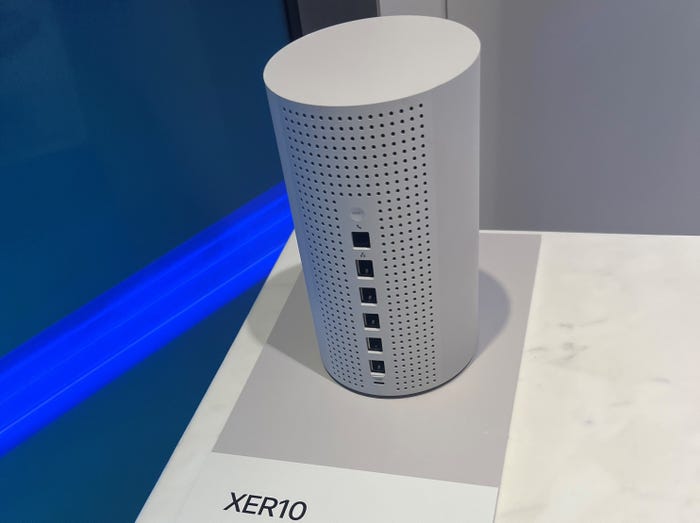
Comcast will use the Wi-Fi 7-capable XER10 router on DOCSIS and PON networks. (Source: Jeff Baumgartner/Light Reading)
Switching to mobile and wireless, Comcast will soon launch "Wi-Fi Speed Boost," enabling speeds of 1 Gbit/s on mobile devices that are connected to the operator's Wi-Fi network. Charter Communications offers a similar enhancement to Spectrum Mobile customers. Comcast expects to launch Wi-Fi Speed Boost within the next 90 days, an official said.
Comcast is also nearing the launch of a new motion detection capability for its in-home Wi-Fi platform. Customers will be able to customize it using the xFi app to select devices and create motion detection "zones."
Also on tap in the second half of 2024 is a Low Latency DOCSIS (LLD) enhancement. Currently in trials with companies such as Apple, Nvidia and Valve, LLD will put Comcast customers in position to select which devices to take advantage of that feature, such as a connected gaming console or a VR or AR device.
Tuning in 'high fidelity video'
Comcast is also looking to spruce up its video tech with what it is calling "high fidelity video," an enhancement that delivers video in 4K, high dynamic range (HDR) with Dolby Vision and Dolby Atmos sound.
Comcast recently tested high fidelity video, which presents more vibrant colors with fewer artifacts than regular HD and 2160p resolution, with about 200 employees in the US and with Sky in Europe for Sunday's Super Bowl between the Kansas City Chiefs and the San Francisco 49ers.
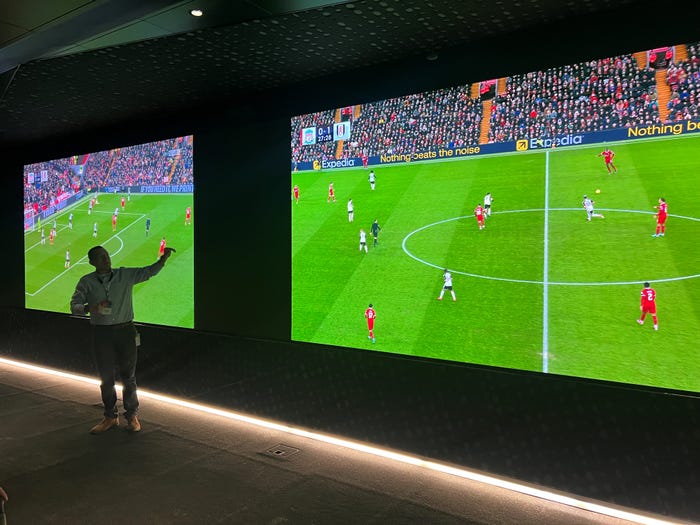
Here at its 'Converge' event, Comcast showed how a soccer game in 'high fidelity video' compared to an HD broadcast. (Source: Jeff Baumgartner/Light Reading)
Execs noted that high fidelity video packs about 66% more bits than a traditional 4K feed at latencies that are only about 10 to 20 seconds behind the regular TV broadcast.
Correction: The latency is 10 seconds behind the live action in the stadium (not 10 seconds behind the regular TV broadcast).
Comcast said it was pleased with the trial, but the company hasn't announced when high fidelity video will become commercially available.
Expect it "soon," said Fraser Stirling, Comcast's global chief product officer. When it is launched, customers will need a 4K/HDR TV and a 4K-capable in-home device to take full advantage of high fidelity video.
A high fidelity video stream requires speeds of 25 Mbit/s to 35 Mbit/s, according to Stirling.
Sticking with video, Comcast also talked up Sky Live, an interactive video camera that supports motion-based games and fitness programs that's available today in Europe. Comcast plans to make the product available across more markets, but execs didn't elaborate on when and where.
About the Author(s)
You May Also Like




